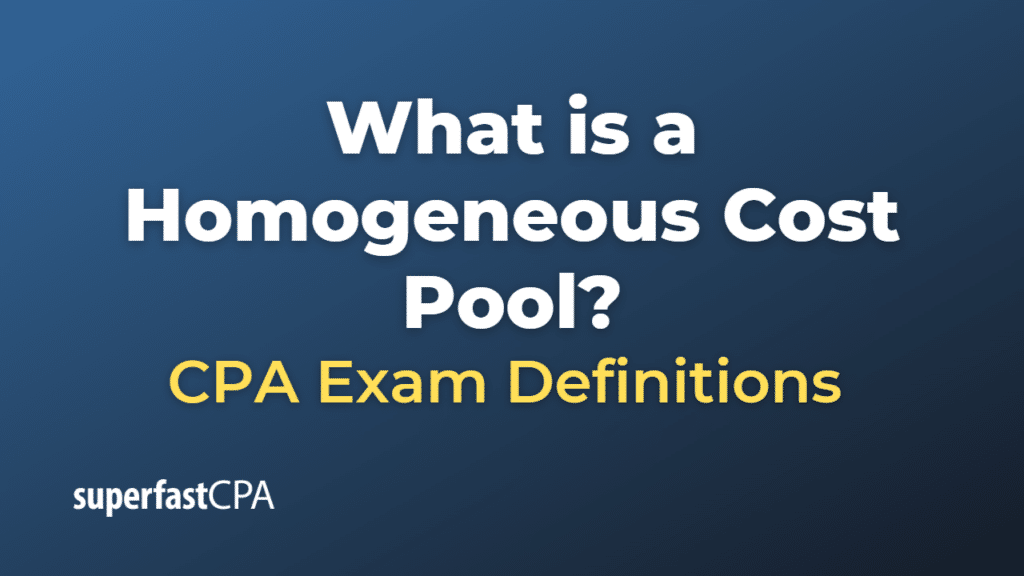Homogeneous Cost Pool
A homogeneous cost pool refers to a grouping of individual costs that share the same cause-and-effect relationship with a single cost driver. In cost accounting, costs are often grouped into pools based on their behavior or basis for allocation.
A cost driver is any factor that creates or drives the cost of a particular business activity. It is the primary determinant of the costs accumulated in a cost pool. For instance, machine hours could be a cost driver for a cost pool including costs such as machine maintenance, electricity for running the machines, and machine operator wages.
The concept of a homogeneous cost pool is rooted in Activity-Based Costing (ABC), a costing method that identifies activities in an organization and assigns the cost of each activity to all products and services according to the actual consumption by each.
Grouping costs into homogeneous cost pools can provide more accurate costing because it recognizes that different types of costs behave differently. Therefore, the appropriate cost driver can be used to allocate each cost pool to products or services, leading to more accurate product costing and pricing decisions.
Example of a Homogeneous Cost Pool
Let’s assume you own a furniture manufacturing company. Here are three potential homogeneous cost pools and their respective cost drivers in this context:
- Machine Operation Cost Pool: This cost pool could include costs like machine depreciation, electricity for running the machines, and machine maintenance costs. The cost driver for this cost pool might be machine hours, as these costs increase with the amount of time the machines are running.
- Material Handling Cost Pool: This cost pool might include costs associated with moving and storing raw materials and finished goods, such as wages for material handling staff, costs of forklift operations, and costs of warehouse space. The cost driver for this cost pool could be the number of material moves or the number of units handled.
- quality control Cost Pool: This cost pool might include costs related to quality inspections and rework, such as wages for quality control staff and costs of rework materials. The cost driver for this cost pool could be the number of inspections or the number of units produced.
By categorizing these costs into different homogeneous cost pools, each driven by a different cost driver, you can more accurately allocate these costs to each piece of furniture you manufacture. This will allow for better understanding of the cost structure of your products and help you make more informed decisions on pricing and cost control.













